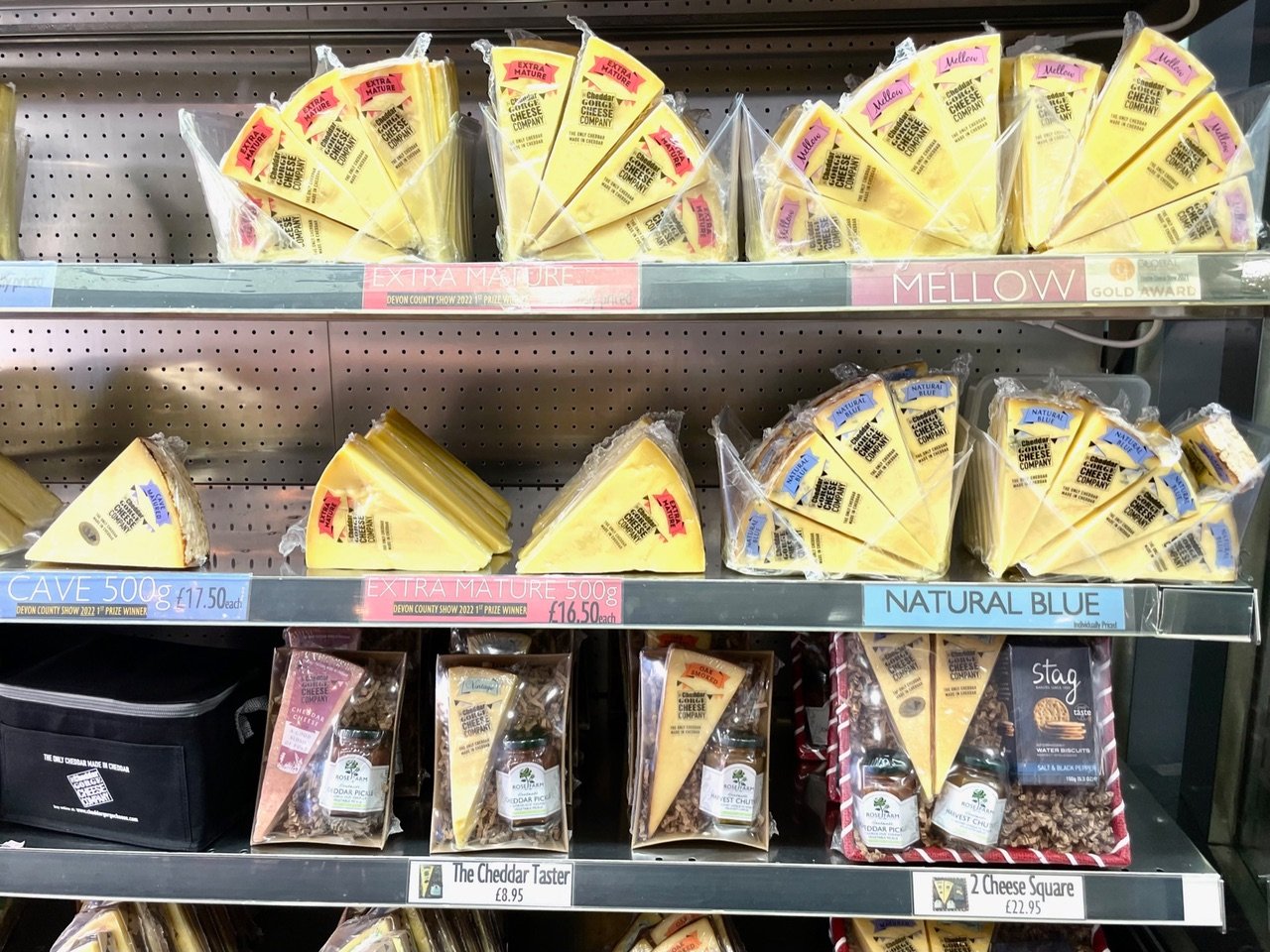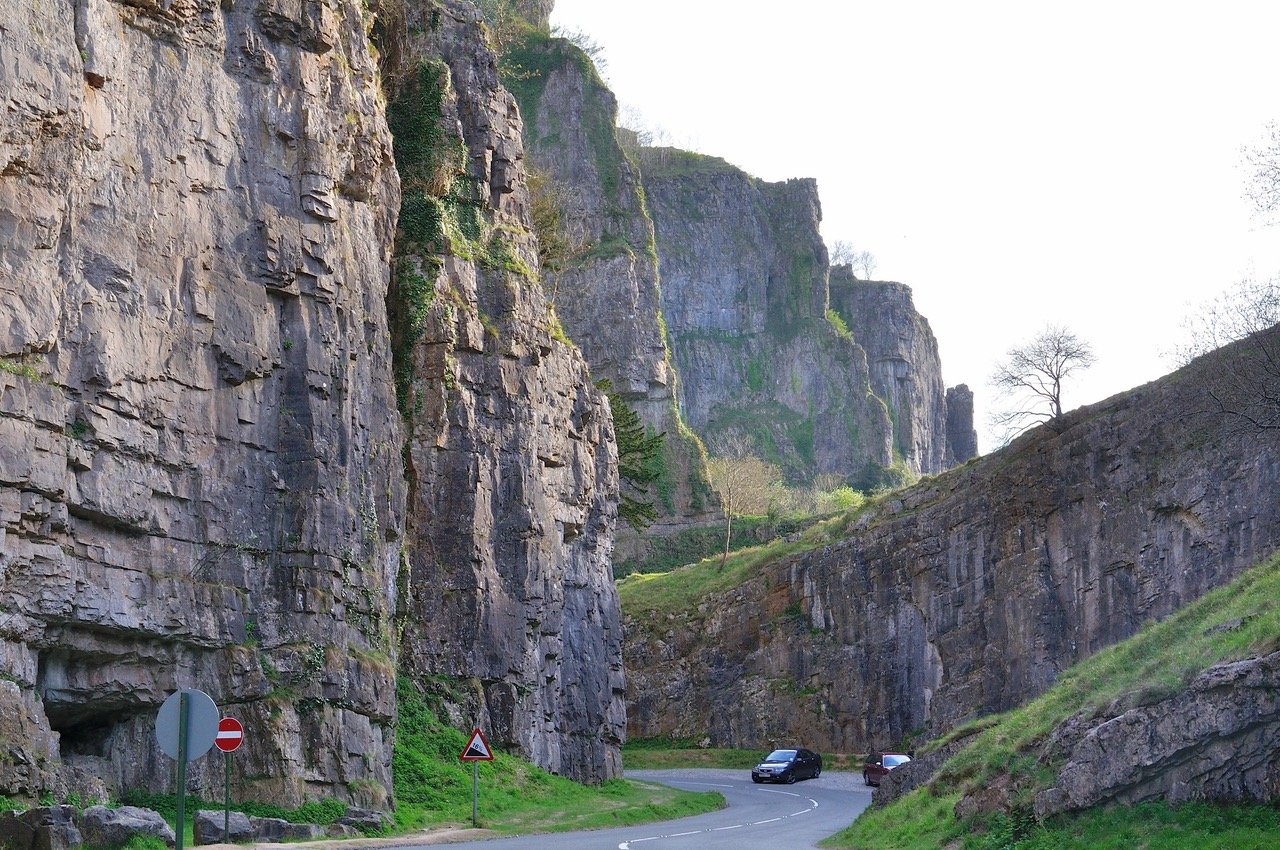Cheddar Gorge Cheese Company: A Story Of Revival (Reinvention)
Cheddar Gorge cheeses photo credit Penny Sadler
A walk through the dairy section of any grocery store will reveal block after block, wheel after wheel, of yellow orange cheese, also known as Cheddar cheese. It’s so ubiquitous that many people in the English-speaking world simply refer to Cheddar as cheese.
However, nothing could be farther from true English clothbound Cheddar than these bland slices. Once you’ve tasted the nutty, crumbly, savory version, you’ll never eat another slice of plastic-aged cheese masquerading as cheddar. Cheddar is so popular that it is produced all around the world. What many people do not know is that it originated in the village of Cheddar in southwest England.
The Rise and Fall of Cheddar Making in Cheddar
“Cheddar Gorge” by Philip N Young is licensed under CC BY-NC-ND 2.0.
The village of Cheddar, located in Somerset County in southwest England, was the hub for thousands of small dairies producing clothbound Cheddar. Records indicate that Cheddar cheese has been produced since the 12th century. Originally, the cheese had to be made within thirty miles of Wells Cathedral to be called Cheddar.
Making Cheddar cheese is very physical and varies from producer to producer. Here’s an abbreviated description of the Cheddar-making process: the curds and whey are stirred and scalded, and the whey is drained. Then, the process of cheddaring the cheese can begin. Simply put, cheddaring is a process of stacking the cheese curds and draining them. After the whey drains, all of the curds are piled together in the cheese vat. The pile is cut into long slabs. The slabs are laid across the bottom of the cheese vat and stacked, repeatedly. The process of cheddaring determines the texture and taste of the cheese. It makes the cheese drier and gives it a longer shelf life. The cheese is then salted by hand and pressed into molds to be stored for aging. Traditionally the cheese was aged in the Cheddar Gorge caves.
In the past, people traveled from far and near to bring their Cheddar to market and to buy Cheddar in the village. During WWII, the government needed to create a stable food supply, and the milk supplied by these dairies was used to make cheese that could be mass-produced. Making Cheddar cheese became a mechanized process. By the end of WWII, there were only around 100 dairies left, and the village of Cheddar was no longer known for its cheese.
The Return of Farmhouse Cheesemaking to Cheddar
The Cheddar Gorge Company photo credit Penny Sadler
In 2003 locals John and Katherine Spencer saw an opportunity to bring Cheddar cheese back to their village. They opened Cheddar Gorge Cheese Co. and became the only producer of farmhouse Cheddar, made and aged in the namesake village, reviving the tradition of making Cheddar in Cheddar. Cheddar village is located at the mouth of Cheddar Gorge, an incredible geological formation that includes a series of caves. The caves were originally used to store and age cheese, as the humidity and temperature are perfect there. The humidity in the caves allows mold to grow on the outside of the cheese. This process produces more complex flavors in the cheese.
The land and caves of Cheddar Gorge are owned in part by the National Trust and in part by a private landowner. Gough’s Cave, the cave that was originally used for aging cheese, is owned by the private owner. In 2006, the Spencers negotiated with the landowner to allow them to age some cheese in the cave for up to 24 months.
Visiting Cheddar
Cheddar Gorge tasting room photo credit Penny Sadler
Visitors to Cheddar can tour the facilities and discover for themselves how Cheddar is made. For a reasonable fee, you can also visit Gough’s Cave, which is worth the extra investment of time and money. It’s a very picturesque spot and draws outdoor lovers, too.
The store also has a tasting bar and offers samples of many of their cheeses, which you can also purchase to take home with you. Have a look at the website here, and be sure you book your VIP cheese tour in advance.




